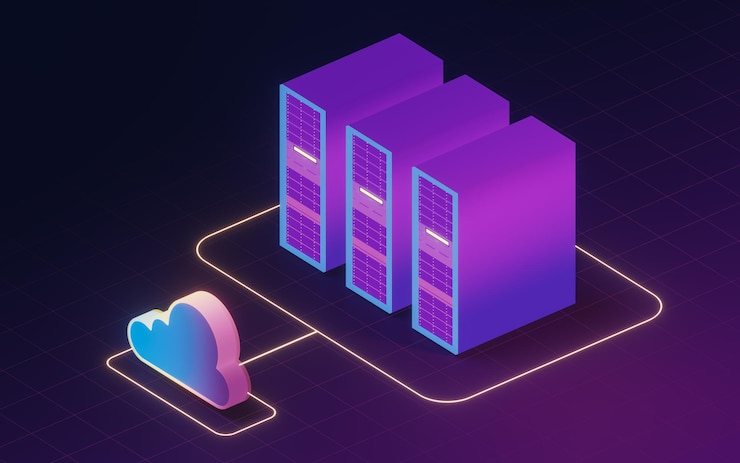Build a Simple CMS with VPS Hosting: A Step-by-Step Guide
Building a simple Content Management System (CMS) with VPS hosting can empower you to create and manage websites efficiently. Whether you’re a developer or a business owner, this guide will help you understand the process, from setting up your VPS to coding a basic CMS.
Introduction
In this article, we’ll explore how to build a simple CMS using VPS hosting. We’ll cover the basics of VPS setup, essential tools for development, and the step-by-step process of creating a lightweight CMS. By the end, you’ll have a functional CMS tailored to your needs.
Understanding VPS Hosting and Its Role in Building a CMS
Before diving into the CMS development, it’s crucial to understand what VPS hosting offers and why it’s ideal for building a CMS.
What is VPS Hosting?
VPS (Virtual Private Server) hosting is a versatile hosting solution that provides a dedicated virtual environment on a shared physical server. Unlike shared hosting, which limits customization, VPS hosting offers root access, allowing you to install and configure software, set up databases, and optimize server settings. This level of control makes VPS hosting an excellent choice for developers and businesses looking to build a custom CMS.
Why Choose VPS Hosting for a CMS?
- Customization: With root access, you can tailor the server environment to suit your CMS requirements.
- Scalability: VPS hosting can handle growing traffic and content without compromising performance.
- Security: Dedicated resources and isolated environments enhance security, protecting your CMS from shared hosting vulnerabilities.
- Performance: VPS hosting ensures faster load times and smoother user experiences compared to shared hosting.
Setting Up Your VPS for CMS Development
Once you’ve chosen a VPS hosting plan, the next step is setting up the server environment for CMS development.
Choosing the Right VPS Provider
Select a reliable VPS provider that offers:
- Flexible plans: Choose a plan that aligns with your CMS needs, whether you’re building a small blog or a large e-commerce site.
- High uptime: Ensure the provider guarantees at least 99.9% uptime to avoid disruptions.
- Good support: Look for 24/7 customer support to address any issues during setup or development.
Installing Essential Software
To build a CMS, you’ll need a server environment with the following software installed:
- Web Server: Install Apache or Nginx to handle HTTP requests.
- Database: Set up MySQL or PostgreSQL to store CMS content and data.
- Programming Language: Choose PHP, Python, or another language for CMS development.
- FTP/SSH Access: Install tools like FileZilla or use SSH to manage files and server settings.
Setting Up the Server Environment
After installing the software, configure the server settings to ensure optimal performance and security. This includes:
- Setting up a firewall: Use tools like UFW to block unauthorized access.
- Optimizing server settings: Adjust PHP memory limits, upload sizes, and caching options.
- Creating a secure FTP account: Use SFTP for secure file transfers.
Designing Your CMS Architecture
With the server environment ready, the next step is designing the architecture of your CMS.
Defining CMS Requirements
Before writing code, outline the features and functionalities your CMS must have. Typical requirements include:
- User Authentication: Allow users to register, log in, and manage their profiles.
- Content Management: Enable users to create, edit, and delete content (e.g., blog posts, pages).
- Media Uploads: Support image and file uploads for content.
- Theming: Provide templates to customize the CMS appearance.
Choosing a CMS Framework
If you’re not starting from scratch, consider using a lightweight framework to speed up development. Popular options include:
- Laravel (PHP): Offers robust tools for building scalable CMS applications.
- Django (Python): Ideal for creating secure and high-performing CMS platforms.
- Express.js (Node.js): Provides a fast and flexible backend for CMS development.
Database Schema Design
Plan your database schema to store CMS data efficiently. Key tables to include are:
- Users: Store user information such as usernames, passwords, and roles.
- Content: Store articles, pages, or other content types.
- Media: Store uploaded files, including images and documents.
- Settings: Store CMS configuration options.
Developing Your CMS
With the architecture designed, it’s time to start coding your CMS.
Setting Up the Development Environment
Create a local development environment to test your CMS before deploying it to the VPS. Use tools like XAMPP (for PHP) or Docker to simulate the server environment on your local machine.
Writing the Core CMS Code
Start by building the core functionalities of your CMS, including:
- User Authentication: Implement login, registration, and password recovery features.
- Content Management: Create CRUD (Create, Read, Update, Delete) functions for content.
- Media Management: Build upload and retrieval systems for media files.
Creating the Frontend Interface
Design a user-friendly admin panel and frontend templates. Use HTML, CSS, and JavaScript to create responsive and intuitive interfaces. Popular frontend frameworks like Bootstrap or Tailwind CSS can speed up the process.
Integrating Security Features
Ensure your CMS is secure by implementing:
- Input Validation: Validate and sanitize user inputs to prevent SQL injection and XSS attacks.
- Authentication Protection: Harden user authentication with rate limiting and secure password storage (e.g., bcrypt).
- HTTPS: Force HTTPS to encrypt data transfers between the server and users.
Deploying and Maintaining Your CMS
Once your CMS is ready, deploy it on your VPS and ensure it runs smoothly.
Migrating the CMS to the VPS
Upload your CMS files to the VPS using FTP or SSH. Configure the web server to point to the CMS directory and ensure the database is properly linked.
Testing and Optimization
Test the CMS on the VPS to identify any performance or compatibility issues. Use tools like Google PageSpeed Insights to optimize loading times and implement caching mechanisms like Redis or Memcached.
Backups and Updates
Regularly back up your CMS database and files to prevent data loss. Schedule updates for both the CMS and server software to address security vulnerabilities and improve performance.
Final Thoughts
Building a simple CMS with VPS hosting is a rewarding project that grants you full control over your website’s functionality and performance. By following the steps outlined in this guide, you can create a lightweight, secure, and scalable CMS tailored to your needs. Whether you’re a developer or












